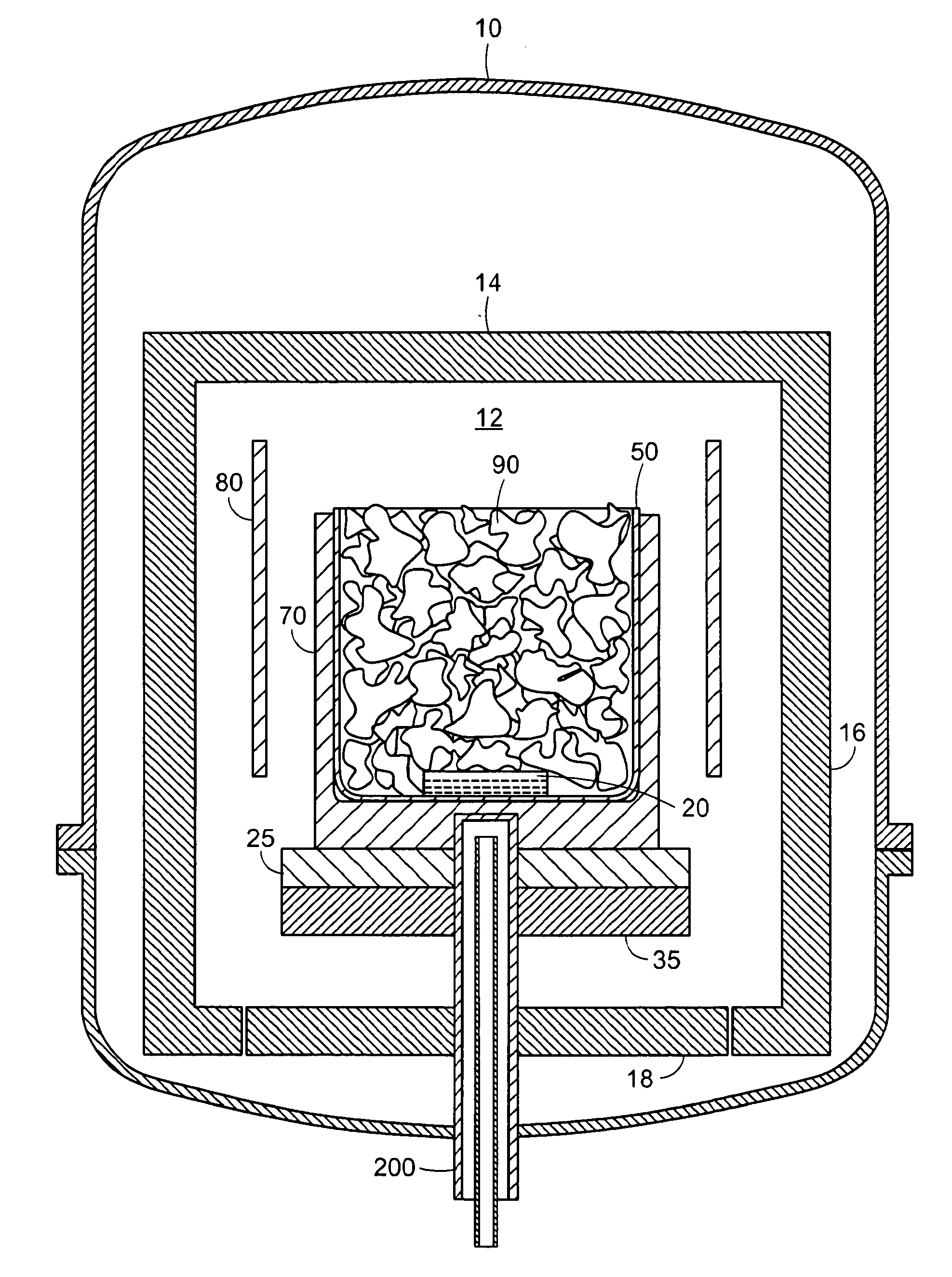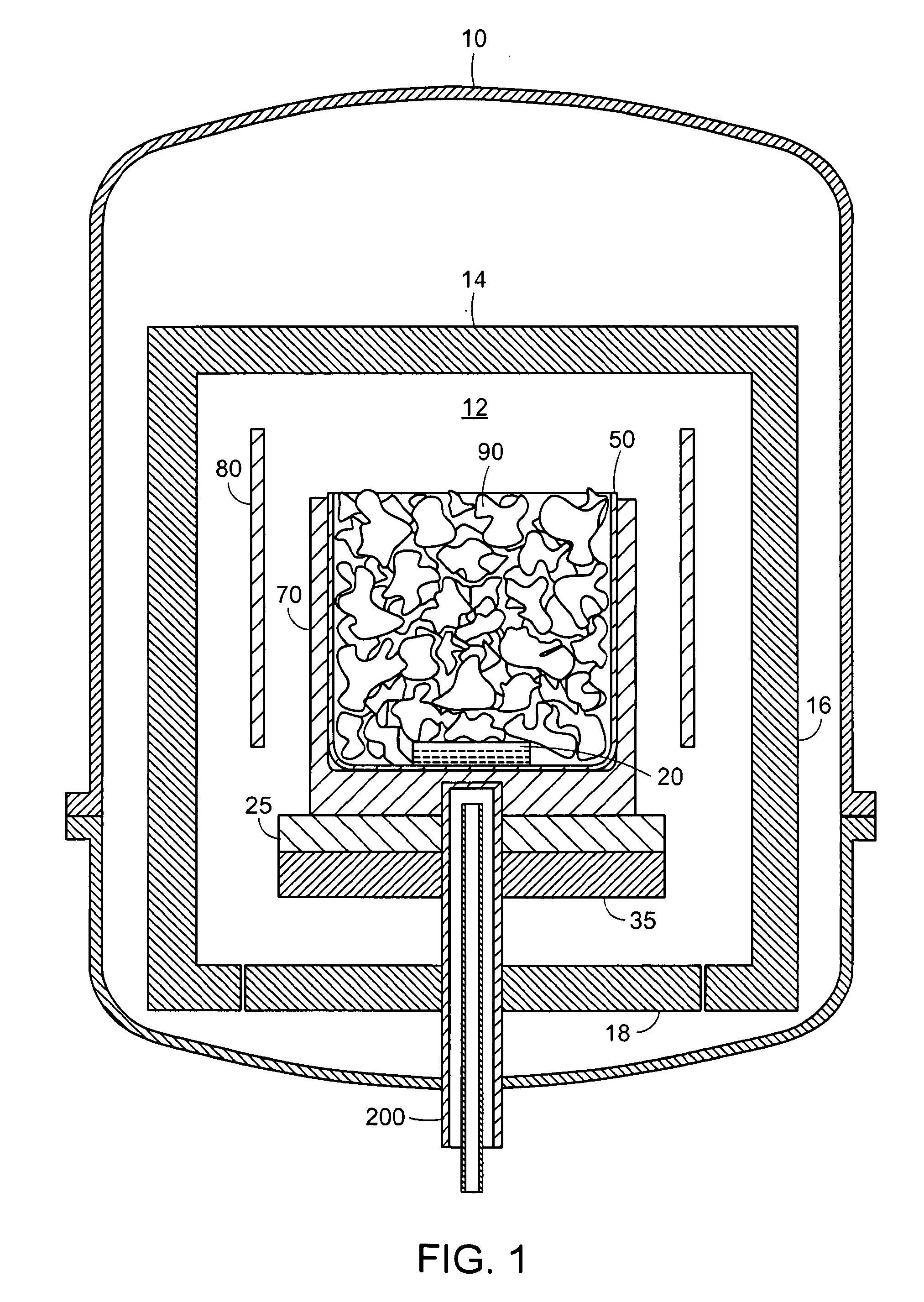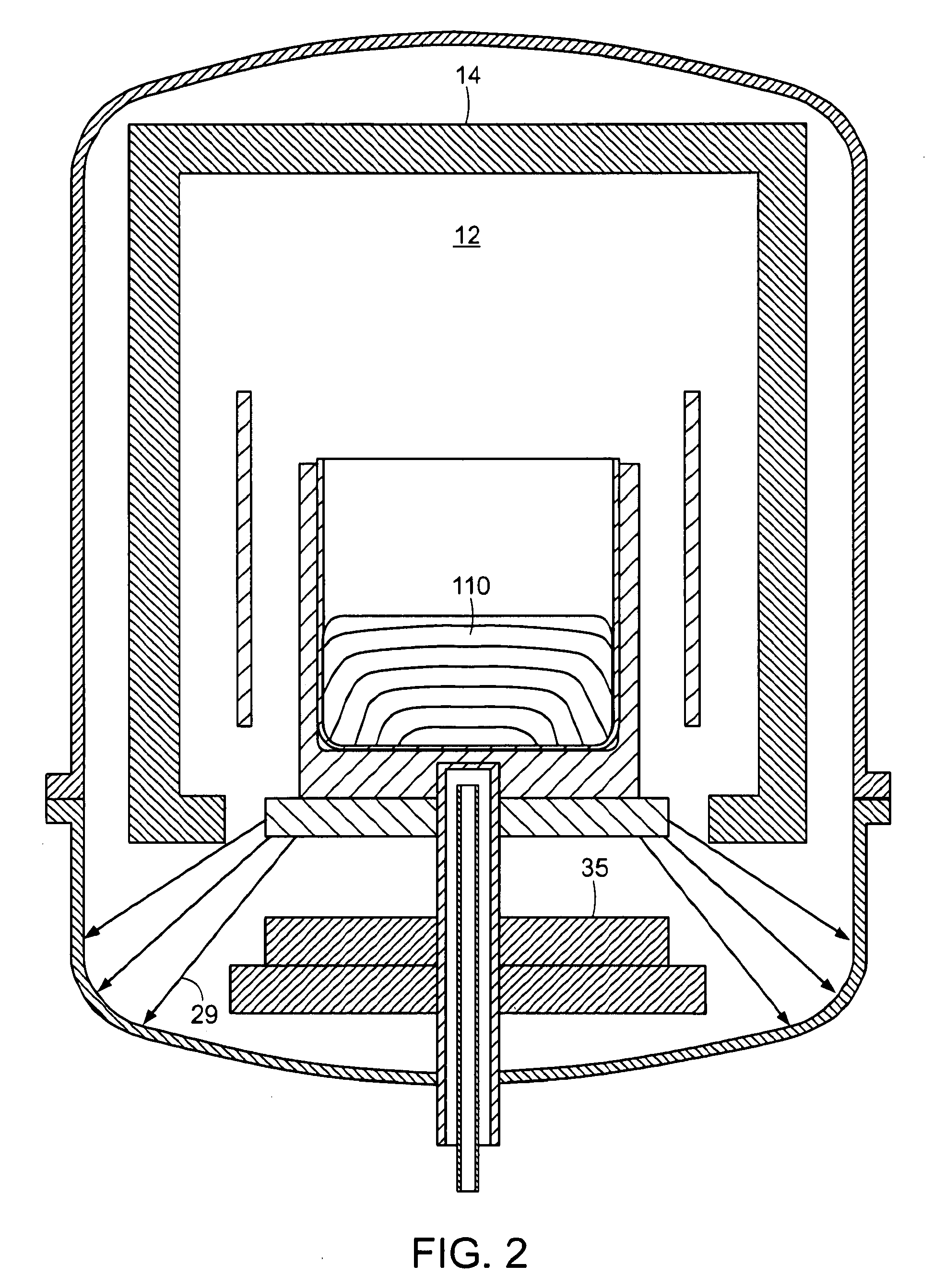Systems and methods for growing monocrystalline silicon ingots by directional solidification
a monocrystalline silicon and ingot technology, applied in the direction of crystal growth process, polycrystalline material growth, chemistry apparatus and processes, etc., can solve the problems of reducing the efficiency of any device formed, so as to achieve high quality, time saving, and retain cost efficiency
- Summary
- Abstract
- Description
- Claims
- Application Information
AI Technical Summary
Benefits of technology
Problems solved by technology
Method used
Image
Examples
Embodiment Construction
Preferred embodiments of the subject invention are described below with reference to the accompanying drawings, in which like reference numerals represent the same or similar elements.
The subject invention relates to systems and methods of growing monocrystalline materials. While the description herein discusses production of monocrystalline silicon, the techniques and methods described herein are not limited to the production of monocrystalline silicon or silicon only. A number of monocrystalline materials can be produced using the method of the subject invention such as semiconductor crystals (for example, Ge, GaAs, etc.), oxides (for example, sapphire, YAG, ALON), and fluorides (for example, MgF2, CaF2), etc.
Current efforts to commercially produce monocrystalline materials such as silicon generally employ radiant heat extraction. The system and method of the subject invention can be used to produce monocrystalline ingots by modifying the directional solidification process to prod...
PUM
| Property | Measurement | Unit |
|---|---|---|
| diameter | aaaaa | aaaaa |
| diameter | aaaaa | aaaaa |
| pressure | aaaaa | aaaaa |
Abstract
Description
Claims
Application Information
 Login to View More
Login to View More - R&D
- Intellectual Property
- Life Sciences
- Materials
- Tech Scout
- Unparalleled Data Quality
- Higher Quality Content
- 60% Fewer Hallucinations
Browse by: Latest US Patents, China's latest patents, Technical Efficacy Thesaurus, Application Domain, Technology Topic, Popular Technical Reports.
© 2025 PatSnap. All rights reserved.Legal|Privacy policy|Modern Slavery Act Transparency Statement|Sitemap|About US| Contact US: help@patsnap.com



